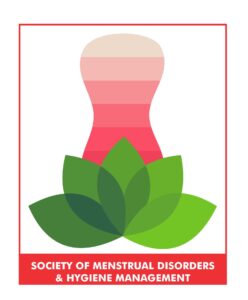Reviewer Guidelines
International Journal of Reproductive and Menstrual Science (IJRMS) follows the double blind peer review process. That means author and reviewer identity will be kept hidden.
The Responsibility of the Peer Reviewer
The peer reviewer is responsible for critically reading and evaluating a manuscript in their specialty field, and then providing respectful, constructive, and honest feedback to authors about their submission. It is appropriate for the Peer Reviewer to discuss the strengths and weaknesses of the article, ways to improve the strength and quality of the work, and evaluate the relevance and originality of the manuscript.
Before Reviewing Please consider the following:
Does the article you are being asked to review match your expertise?
If you receive a manuscript that covers a topic that does not sufficiently match your area of expertise, please reject the review request from your profile.
Do you have time to review the paper?
Finished reviews of an article should be completed within one week. If you do not think you can complete the review within this time frame, please let the editor know and if possible, suggest an alternate reviewer. If you have agreed to review a paper but will no longer be able to finish the work before the deadline, please contact the editor as soon as possible.
The Review
When reviewing the article, please keep the following in mind:
Content Quality and Originality
Does the article say something new and interesting enough to warrant publication? Does it add to the body of knowledge? Is the research question an important one? In order to determine its originality and appropriateness for the journal, it might be helpful to consider the article in the context of the wider published research, using tools such as Web of Science, Scopus etc. How does it compare to the most highly cited or downloaded papers in the field? If the research has been covered previously, forward any relevant references to the Editor.
Layout and format
Authors must comply fully with the journal’s author guidelines, which include manuscript presentation. If the author has clearly failed to present the article according to these guidelines and the Editor has not already highlighted this in the invitation to review, you should either flag this to the Editor or note this in your review. If the paper is particularly original or interesting the Editor may choose to overlook the formatting issues throughout the peer review process and ask the author to address these only shortly prior to eventual acceptance; but at other times the Editor may ask the author to restructure the paper before progressing it any further.
Organization and Clarity
Title: Does it clearly describe the manuscript/article? Does it include the most important keywords (consider how you search for research articles) and demonstrate the significance of the research? Does it make sense?
Abstract: Does it reflect the content of the article?
Introduction: Does it describe what the author hoped to achieve accurately, and clearly state the problem being investigated? Normally, the introduction should summarize relevant research to provide context, and explain what other authors' findings, if any, are being challenged or extended. It should describe the experiment, the hypothesis and the general experimental design or method.
Method: Does the author accurately explain how the data was collected? Is the design suitable for answering the question posed? Is there sufficient information present for you to replicate the research? Does the article identify the procedures followed? Are these ordered in a meaningful way? If the methods are new, are they explained in detail? Was the sampling appropriate? Have the equipment and materials been adequately described Does the article make it clear what type of data was recorded; has the author been precise in describing measurements?
Statistical errors: These are common and so close attention should be paid.
Results: This is where the author/s should explain in words what he/she discovered in the research. It should be clearly laid out and in a logical sequence. You will need to consider if the appropriate analysis has been conducted. Are the statistics correct? If you are not comfortable with statistics, please advise the editor when you submit your report. Interpretation of results should not be included in this section.
Conclusion/Discussion: Are the claims in this section reasonable and supported by the results? Are the findings consistent with the author’s expectations? Do the conclusions adequately tie together the other elements of the paper? Does the article support or contradict previous theories? Does the author explain how the research has added to the body of knowledge?
Graphics (Figures, Images) and Tables: Where these are included, please check the content and if possible make suggestions for improvements. Do the figures and tables inform the reader? Are they an important part of the manuscript? Do the figures describe the data accurately? Do they properly show the data? Are they easy to interpret and understand? Are they presented consistently?
Language: Does the quality of English make it difficult to understand the author’s argument? If this is the case, you do not need to correct the English but should instead mention this as part of your review. In extreme cases where an interesting or original contribution is undermined by poor quality of expression you may bring this to the attention of the Editor who can then advise of sub-editing services.
Scope: Is the article in line with the aims and scope of the journal
